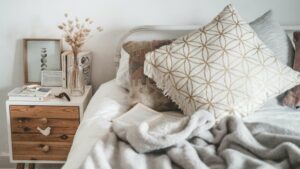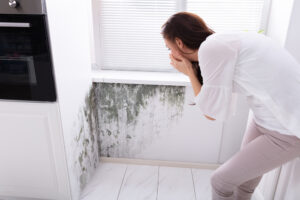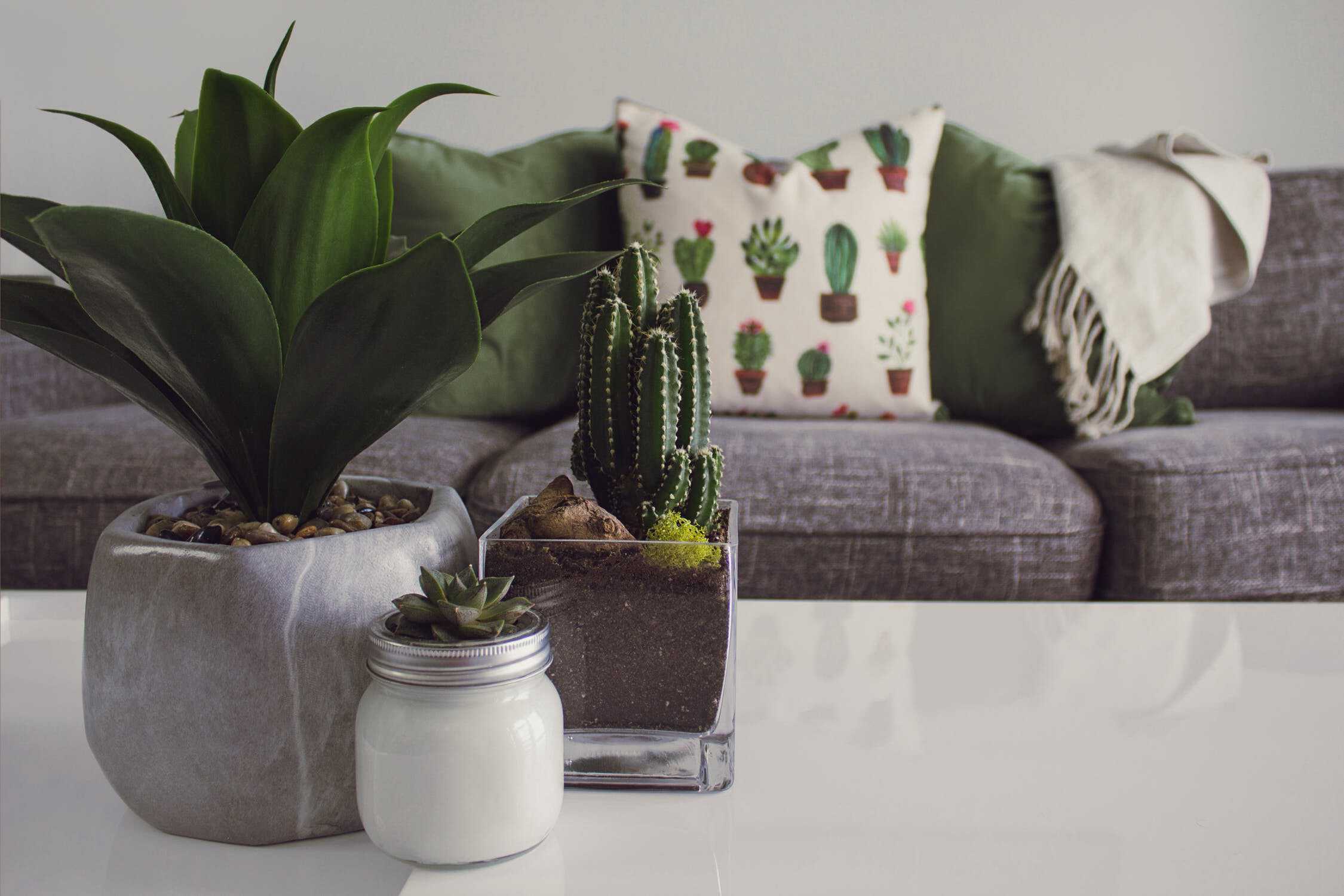 Winter brings a cozy atmosphere to our homes, but it also comes with challenges such as increased indoor time, poor indoor air quality, flu season and wet weather. Keeping your home clean and healthy in winter can be easier than you think.
Winter brings a cozy atmosphere to our homes, but it also comes with challenges such as increased indoor time, poor indoor air quality, flu season and wet weather. Keeping your home clean and healthy in winter can be easier than you think.
Ensure you’re practising frequent handwashing to prevent the spread of germs. Keep hand sanitizers and antibacterial soap in easily accessible locations around your home such as near sinks, basins and entryways.
As part of your home cleaning routine, wipe down frequently touched surfaces like doorknobs, light switches and remote controls with disinfectant wipes or a solution of water and vinegar. Do this regularly to reduce the spread of germs and reduce the risk of illness.
Place doormats at the front and back entrances of your home and encourage family members and guests to remove their shoes before entering. This helps reduce the amount of dirt, debris and germs brought into your home.
We tend to keep our doors and windows closed when it’s cold, however opening them for 5 to 10 minutes each day can make a significant impact to the indoor air quality in your home. You can also use an air purifier to reduce allergens and pollutants. Ensure you change HVAC filters regularly and consider adding houseplants to help purify the air. Learn more about the Benefits of Indoor Plants and the top 5 recommended plants for greatest health benefits.
Dust furniture, shelves and any other surface that collects dust regularly using a microfiber cloth. Pay special attention to areas that tend to accumulate dust, such as ceiling fans, window sills and skirting boards. Dust can exacerbate respiratory and allergic reactions and usually contains a mixture of tiny particles, including dead skin cells, pet hair, pollen, dust mites and other allergens. When inhaled, these particles can irritate the respiratory tract, trigger allergies and lead to symptoms such as sneezing, coughing and itchy eyes. Prolonged exposure to dust can also contribute to chronic respiratory issues and other health problems so keep your home dust-free as much as possible.
Winter weather can bring mud and moisture to your carpeted floors. Vacuum your carpets and rugs frequently to remove any debris and dirt and consider having them steam cleaned every 6 to 12 months to remove deep-seated dirt and allergens. You may like to read A Guide to Maintaining Carpets to enhance the longevity of your carpets.
Maintaining balanced humidity levels can help prevent the growth of mould and mildew, which thrive in damp conditions and can cause respiratory issues and allergic reactions. Balanced humidity also helps keep the skin hydrated and reduces the risk of respiratory infections and skin irritations, which are common in dry winter air. To maintain optimal humidity levels ensure your home is well ventilated or you can use a humidifier to enhance humidity levels.
Wash sheets, pillowcases and frequently used blankets at least once a week in hot water to kill germs and dust mites. We recommend using hypoallergenic laundry detergent to reduce skin irritations. Also, ensure the bedding is completely dry before placing them back on your bed or storing them in cupboards to prevent any growth of mould and mildew.

Wet and dirty clothes can pile up quickly in winter. When damp or wet clothes are in your washing basket for prolonged periods of time it can lead to mould and mildew growth. After washing, ensure the clothes are thoroughly dry before storing them.
Remember to clean and disinfect your cleaning tools to maintain optimal hygiene and cleanliness throughout your home. This includes disinfecting items such as sponges, dusters, cleaning cloths, mops and vacuum filters, to prevent spreading germs within your home. A good way to naturally disinfect cleaning tools is to use warm/hot soapy water with a mild detergent or a natural disinfectant such as white vinegar or essential oils (eucalyptus or tea tree oil). For more information you may like to read Green Cleaning: How it Benefits Your Health & Home.
By incorporating these tips into your cleaning routine, you can maintain a clean and healthy home environment throughout the winter season, ensuring comfort and well-being for you and your family. If you are finding that your time is limited and you would like to arrange a quote for a regular home cleaning service or a once-off (spring) clean, enquire here. The Bliss Home Care Services team are dedicated to keeping your home clean and healthy in winter with our certified green cleaning products.
 Decluttering your home can feel like a daunting task, but breaking it down room by room can make the process more manageable and less overwhelming. When you declutter your home, it also offers a range of benefits that positively impact your physical health, mental well-being, productivity, and overall quality of life. It's a simple, yet powerful, way to create a more harmonious and fulfilling living environment.
Decluttering your home can feel like a daunting task, but breaking it down room by room can make the process more manageable and less overwhelming. When you declutter your home, it also offers a range of benefits that positively impact your physical health, mental well-being, productivity, and overall quality of life. It's a simple, yet powerful, way to create a more harmonious and fulfilling living environment.
In this guide, we'll take you through each room of your home, offering practical tips and strategies to help you declutter effectively and create a more organised living space.
Living Room
Kitchen
Begin by emptying cabinets and drawers, discarding expired food items, and donating or getting rid of kitchen gadgets or appliances you no longer use.
Bedroom
Bathroom
Home Office / Study
Laundry
Benefits of Decluttering Your Home
Decluttering your home offers a multitude of benefits, both practical and psychological. When your home is organised and free of clutter you will find the space more calm, inviting and relaxing, allowing you to enjoy your haven so much more!
Some additional benefits of decluttering your home include:
By following these practical tips and strategies, you can tackle clutter effectively and create a more peaceful and harmonious environment in your home. Remember to use natural cleaning products when cleaning your home during the decluttering process. You may be interested in reading our article, Why Using Natural Cleaning Products is Better which also provides some home cleaning tips.
If you have carpets or rugs in your home, you can also access our Guide to Maintaining Carpets which provides an overview of the different types of carpets and the best way to maintain their cleanliness.
 Have you noticed mould growing in your bathroom, bedroom or living area? If you have, it’s incredibly important to treat the mould immediately as it can be damaging to your and your family’s health.
Have you noticed mould growing in your bathroom, bedroom or living area? If you have, it’s incredibly important to treat the mould immediately as it can be damaging to your and your family’s health.
If you suspect mould growth in your home, it's crucial to address the issue promptly.
In this article, we look at the signs of mould, the health implications of mould, treating mould naturally and 3 easy steps to prevent mould.
Mould can spread quickly and cause damage to your property and potentially impact your health. Here are 3 common signs that suggest you may have mould:
Mould produces allergens, irritants and potentially toxic substances called mycotoxins. When mould spores are present in the air and when inhaled they can trigger various health problems, especially for individuals with existing respiratory conditions. Additionally, mould can trigger:
The severity of health effects is dependent on the type of mould, individual sensitivity and extent of exposure. To protect yourself and your family from any potential health implications, eliminate the mould and prevent it from reoccurring.
Most of the mould cleaners you buy from supermarkets and cleaning supply stores are laden with toxic chemicals. Essentially, you are treating toxicity while exposing yourself to more toxicity from chemicals. We highly recommend taking a natural approach, which is just as effective.
All cleaning products used by Bliss Home Care have bio-bacterial and enzyme technology which keeps on working even after you have finished cleaning. These natural cleaning products are made up of “good” living bacteria to break down and liquefy soils such as fat, proteins, carbohydrates and grease while eliminating odours. These products keep on working even after you have finished cleaning.
In particular, for bathrooms, we use Shower BlitzTM. This product can be used all over your walls, shower, tiles, sink and toilet. It contains cultured bacteria that eat away and decompose hard to remove soap scum and prevent the growth of mould. The bacteria bio-degrades matter rather than mask or bleach the problem.
For more information on safe and natural cleaning products you may like to read our article, An Insight to Natural Cleaning Products which breaks down the facts on these Australian made natural cleaning products. The range has been certified by Good Environmental Choice Australia (GECA), an independent body that assesses the products to ensure they meet environmental, human health, and ethical impact criteria.
Preventing mould growth in your home involves keeping moisture levels under control and creating an environment where mould cannot grow and thrive. Here are the 3 most important steps to prevent mould growth in your home:
By taking these preventive measures you can significantly reduce the likelihood of mould growth in your home. This will result in a healthier living environment for you and your family. Our approach is all about being eco-friendly, local, and thoroughly professional. For you, that means house cleaning that is better value, more reliable and healthier for your family and your community. Click here to enquire about regular house cleaning, vacate cleaning or one-off/spring cleaning.
 When selecting carpets and rugs, we usually focus on the look and feel. However, there are other important aspects that should contribute to your decision. This comes down to the materials used in the carpet and rug, the weave, durability and performance over time, as well care and cleaning methods.
When selecting carpets and rugs, we usually focus on the look and feel. However, there are other important aspects that should contribute to your decision. This comes down to the materials used in the carpet and rug, the weave, durability and performance over time, as well care and cleaning methods.
In this article, we’ll take a closer look at these elements to help you make an informed decision when buying your next carpet or rug.
Carpet fibres are the individual strands of material that make up the surface of a carpet. The choice of carpet fibre significantly affects the carpet's appearance, performance and maintenance requirements. Here are some basics about common carpet fibre types:
Nylon is one of the most popular synthetic carpet fibres due to its durability and resilience. It is known for its ability to withstand heavy foot traffic and resist wear and tear. Nylon carpets are also highly resistant to stains and are relatively easy to clean. They come in a wide range of colours and styles.
Polyester is another synthetic fibre used in carpets. It is known for its softness, vibrant colours and stain resistance. Polyester carpets are generally less expensive than nylon carpets but may be less durable, especially in high-traffic areas. However, advances in technology continue to improve the durability of polyester carpets.
Olefin (polypropylene) is a synthetic fibre that is resistant to staining, fading, and moisture. It is often used in indoor and outdoor carpets and is suitable for areas prone to spills or moisture. Olefin carpets are generally less expensive but may not be as durable as nylon or polyester.
Wool is a natural fibre that is highly regarded for its luxurious feel, durability and natural stain resistance. Wool carpets are known for their ability to retain their appearance over time and are often considered a premium option. Wool is naturally flame retardant and has excellent insulation properties, making it a good choice for both warmth and sound absorption.
Some carpets are made from a blend of different fibres to combine their positive attributes. For example, a common blend is nylon and polyester, which combines the durability of nylon with the softness and affordability of polyester.
When choosing a carpet fibre, you should consider factors such as the level of foot traffic in the area, the level of stain resistance, your budget and personal preferences for softness and appearance. Buying a carpet or rug can be a significant investment, so you should also consider longevity and how easy your carpet is to care for and clean.
Did you know that carpets can contain up to four times their weight in dirt and other debris? While they may appear clean on the surface, they can harbor a surprising amount of dirt, dust and grime. This is the reason it’s critical for your and your family’s health that you clean carpets regularly. Read about the Top 5 Benefits Of Deep Carpet Cleaning for your family’s health.
In addition to dry vacuuming, we recommend deep cleaning once or twice a year to remove contaminants, improve indoor air quality and help keep your home clean and healthy. Let’s take a closer look at ways to keep your carpets clean and healthy…
Dry Vacuuming is the most important step in carpet maintenance as it helps to remove loose dirt, dust, debris and allergens from the surface of the carpet. A domestic vacuum cleaner will help you keep your carpets as clean as possible when they are vacuumed regularly.
There are so many options when it comes to choosing a vacuum cleaner for your home – bag or no bag system, filtration system, suction strength You want to be sure that you choose a high-performance vacuum cleaner to keep your home as clean as possible. Read our guide How to Choose a Vacuum Cleaner for Your Home for some great tips.
Hot Water Extract Carpet Cleaning is based on spraying very hot water (not steam) on the carpet and constantly extracting the water from the carpet by very high-pressured vacuuming. This method enables any soil or dirt on the carpet to be removed and dissolved quickly and effectively. The advantage of using the hot water extract carpet cleaning method is the minimum amount of detergents and chemicals used. Many carpet manufacturers promote hot water extraction carpet cleaning as the most effective carpet cleaning method, especially for natural and man-made fabrics
Dry Carpet Cleaning is a method that uses specialised machines to clean carpets without the use of water or steam. Instead, a dry cleaning compound is applied to the carpet, which is then agitated using a brush or machine to help the powder penetrate the carpet fibres and absorb dirt and debris. Once the compound has absorbed the dirt, it is vacuumed up using a specialised machine, along with the dirt and debris that it has absorbed. One of the main benefits of dry carpet cleaning is that it is a low-moisture method, meaning that carpets can be used and walked on immediately after cleaning.

Bliss Home Care aims to provide Melbourne’s best carpet cleaning service to give you outstanding results every time. Our preferred deep-cleaning carpet methods are Hot Water Extract Cleaning and Dry Carpet Cleaning as both of these options use minimal chemicals.
We are incredibly passionate about the cleanliness of your home and we only use green cleaning products. This keeps your family, pets, our team and the environment happy and healthy.
Bliss Home Care provides reliable, quality, fully trained staff who are insured and we offer a satisfaction guarantee. Our Carpet Cleaning Technician is trained by Jane Dyco , International and certified by Institute of Inspection Cleaning and Restoration Certification (IICRC).
Request a quote for carpet cleaning with Bliss Home Care, click here.
Cleaning for health has never been more important than right now. With the cooler months ahead and viruses on t he brink of becoming a world-wide epidemic, taking care of your home and its cleanliness should be a priority. And because the people and pets you share your home with are important to you, we recommend using natural cleaning products which are also environmentally friendly.
he brink of becoming a world-wide epidemic, taking care of your home and its cleanliness should be a priority. And because the people and pets you share your home with are important to you, we recommend using natural cleaning products which are also environmentally friendly.
So let’s take a closer look at cleaning for health and how you can avoid spreading germs and bacteria throughout your home.
This is a significant issue and germs and bacteria can easily spread from one area of your home to another. One way you can significantly reduce the risk of infection and cross-contamination is to use different cleaning cloths for each area of your home. You can simply colour code cloths or ensure you are particularly careful with the cloths you are using. Always avoid dipping a dirty cloth into a bucket of clean water. Instead place it under running water and give it a wash before putting it back into the bucket of cleaning water.
Tip: Make a natural cleaning solution for surfaces and floors by simply adding 1 part tea tree or eucalyptus oil to four parts of warm water. Once wiped or mopped, allow surfaces to dry naturally so the disinfectant is on the surface long enough to kill and eliminate any germs.
We use natural cleaning products that have bio-bacterial and enzyme technology which keep on working even after you have finished cleaning.
These natural cleaning products are made up of “good” living bacteria to break down and liquefy soils such as fat, proteins, carbohydrates and grease while eliminating odours. These products keep on working even after you have finished cleaning.
When this type of bacteria cleaning product is applied, the microorganisms begin to digest the waste and the “good” bacteria in turn multiply. The soil is broken down and continues to break down the soil into smaller pieces, until there is nothing left.
For more information on safe and natural cleaning products you may like to read our article, An Insight to Natural Cleaning Products which breaks down the facts on these Australian made natural cleaning products. The range has been certified by Good Environmental Choice Australia (GECA), an independent body who assess the products to ensure they meet environmental, human health, ethical impact criteria.
Tip: Use natural cleaning products that continue to work, long after you have finished cleaning.
That’s right, Mother Earth provides us with the essentials we need when it comes to keeping things clean and making our homes and our environment safe.
Keeping doors and windows closed means that the air quality in our homes becomes compromised with pollutants which can quickly become a breeding ground for more bacteria when someone is unwell. If you’re about to reach for air freshener, think again! The scent and gasses emitted from these products will release more harmful chemicals in your environment, adding to your indoor air pollution.
The solution? Open windows and doors, daily if possible. It’s the cheapest and healthiest thing you can do to improve your air quality. Try to do this for even just 5 minutes a day to create airflow circulation and flush out any of the harmful pollutants and bacteria.
What else can you do to ensure you’re cleaning for health? When the sun’s out take full advantage of it – it’s great at killing bacteria, dust mites and other microscopic critters that we can’t see. These may be thriving in your pillows, cushions, doonas, rugs, and blankets without you even realising.
If possible, remove the covers from items and place them on a clean bed sheet or towel to keep them from getting dirty, and leave them out in the sun for 30 to 60 minutes. Rotate them and turn them over to ensure even coverage. This practice is also great for deodorising any smells from sweat and body odour.
Tip: Open your doors and windows to create airflow throughout your home. Be sure to take advantage of the sunshine to kill bacteria and unwanted critters in pillows, blankets, rugs and doonas.
In our article, 7 Reasons to Choose Green Cleaning, we share healthier ways you can incorporate natural cleaning products in your home.
As you can see from reading this article, cleaning for health is not difficult, however it is something we need to do regularly to keep our home, our family, our pets and our environment safe and free from harmful bacteria, germs and viruses.
Isn’t it true that when your home is cluttered, messy and grubby you feel the burden of overwhelm? You can’t seem find anything you are looking for, you may feel embarrassed about the state of your home, you don’t want people coming over and you feel helpless and don’t know where to begin. Cleaning your home is good for your mental health because it’s directly linked to your health and well-being.
In this article we’re going to share some cleaning and organising hacks that will promote a bright, clean, organised and happy home environment. A home environment that supports peace, happiness and living life as it should be lived.
When you see a photo or image of an organised home, bookshelf or room do you feel an unexplained sense of satisfaction? Let’s face it we’re all busy so we sometimes overlook the fact that keeping your home clean and tidy is actually good for you. Leading research has correlated clutter with stress and anxiety, so it’s really true, cleaning your home is good for your mental health!
Join us as we take you through each room of your home…
The Living Room
This is one area of the home that you probably invite your guests into so make it as welcoming as possible. You’ll want to hang out there more often too if the space is inviting and uncluttered.
The Kitchen
The kitchen is often the heart of the home and a place where families come together to share a meal and some family time. Make the area as clean and stress free as possible and get everyone, including your kids involved in sharing the joy of cooking (and cleaning up afterwards).
The Bedroom
There’s no better feeling than having a great night’s sleep. Here’s a few things you can do to make your bedroom the blissful and peaceful room it deserves to be:
The Bathroom
There’s no greater satisfaction than a clean bathroom, particularly when it’s sparkling clean. You won’t want to leave!
The Study
When you’re in work or study mode the last thing you want is distractions. If your desk or study area is messy then chances are you will be unable to focus and have the clarity to get through your tasks. Give your study and desk a tidy up and you’ll be more productive!
Getting Started
If it’s overwhelming start with one room and work your way through your home. Once you get started you’ll build momentum and realise the connection between cleaning your home and good mental health. There have been studies which show that decluttering and housekeeping reduces cortisol stress levels and also extend to your physical well-being. If you’re after a more comprehensive guide to decluttering, then be sure to read our article, Tips for Organising Your Home.
At Bliss Home Care we promote cleaning with eco-friendly and natural products so that you, your family, pets and the environment avoid harmful and toxic chemicals in your home. Throughout our article we have referenced natural cleaning solutions so if you want more information take a look at 10 Natural Home Cleaning Hacks.
Once you’re done, put your feet up and enjoy your clean and stress-free home!
Is it really possible to reduce waste at home and save money? Each small step we take, every change we make will create a positive impact on our environment, our lives and the wider world.
One of our favourite quotes by Matt Bevin sums it up… “While it may seem small, the ripple effective of small things is extraordinary.”
Consider what sort of impact would be made if every person in the world did something small every single day. Collectively we’d make a big impact! Reducing waste at home may seem difficult and a big task at first but there are small things we can do around the home that will create less waste and the added benefit is that it can save you money too.
Here are our top five ideas to inspire you to make a change in your daily habits, and to reduce waste at home:
Your home is the best starting point because you can control what comes in and what goes out.
You will lessen your carbon footprint by using reusable items or those that are biodegradable. You will also save money when you are not constantly replacing items after every use.
Compositing may be daunting but it probably not as involved or messy as you may think. It’s an ideal process in particular if you’re keen to grow your own veggies. It builds good soil structure, it allows soil to retain nutrients, water and air and protects plans from garden diseases. All soil types will improve with the addition of compost.
If you’d like to give it a go here are the basic steps…
Once it’s ready add it to you garden and get growing your own veggies. Plant seasonally and you’ll reap the rewards
of delicious, fresh veggies that you’ve grown yourself!
If you’re still not keen you can keep your food scraps in a container in the fridge or freezer and find a community composting location such as a community garden to contribute to.
Before modern conveniences were available there was canning, freezing, pickling and fermenting. These are the methods that have been around for centuries to keep food from spoiling and avoiding it going to waste.
If you’re growing your own veggies or fruit then you may find that you have an abundance of fresh item each season. Next time you have too much of anything consider how you can preserve it and use it at a later date when perhaps it’s not in season. Here are some examples…
You’ll end up saving lots of money by not buying food and produce out of season and it will be just as fresh or tasty as though you’d just picked it. Best of all you will not be contributing to more environmental waste.
This one is one we are incredibly passionate about. It astounds us that supermarkets and retail outlets are still allowed to sell toxic and harmful cleaning products. These toxic products contribute to indoor air pollution and medical conditions and are poisonous, just read the labels on their own packaging!
You can create your own effective home cleaning solutions that will be safe for adults, babies through to teens, your pets and the environment. Best of all you are likely to have most of the key ingredients in your pantry already. These include:
You may also like to read more in our article, 10 Natural Home Cleaning Hacks, which provides great tips on cleaning almost every area of your home without the nasty, toxic chemicals. When you choose to stop buying expensive and toxic solutions you will quickly notice how much money you are saving! Not to mention the health benefits…
Do you really take notice of how much you throw in the bin? Sometimes we think we are recycling, reusing and being responsible but we often don’t realise how much we are actually sending to landfill until we empty the contents of our bins.
Once a week empty the contents of your bin (including recycling bins) and see where you can make small changes to your habits to contribute less to landfill. Here are some ideas for your consideration….
So there are our five tips to help you reduce waste at home and save money along the way. Best of all you can get the whole family involved. Buy less, waste less, save more! Create a ripple effect by starting in your home and community and watch the movement grow around our precious world.
 The change in urban environments and our work commitments means that many people now live in smaller spaces and don’t get out in the fresh air as often. So why not bring the benefits of the outdoors into your inner sanctuary by using beautiful, green and lush indoor plants?
The change in urban environments and our work commitments means that many people now live in smaller spaces and don’t get out in the fresh air as often. So why not bring the benefits of the outdoors into your inner sanctuary by using beautiful, green and lush indoor plants?
While this may seem like a new trend, the benefits of incorporating plants into the indoors have been around for hundreds of years. Not only are indoor plants easy to look after and maintain, they are powerfully packed with lots of health benefits too. Here we explore the benefits of indoor plants for your health and mind, and which plants are best to use.
Indoor plants drastically reduce indoor air pollution and purify the air inside your home. Our homes can harbour unhealthy invisible toxins such as benzene formaldehyde, carbon monoxide and xylene. These toxins are emitted through furniture, carpets, appliances and household products. Studies have found that incorporating plants into our indoor space can eliminate and neutralise the air within our homes and purify it so we can breathe easier.
Recent studies have shown that green indoor plants with broad leaves help boost your mood and alleviate stress levels. They stimulate the mind and enhance productivity so are a great addition to a teenager’s room who is studying for exams, your study nook or your home office. Green luscious leaves and plants also add colour and life into the indoor space you inhabit. Plants are also known to increase positivity and mental well being.
With the busy lives we lead these days having a restful and blissful eight hours sleep each night can be challenging. There are some plants whose fragrance can stimulate relaxation and promote a better night’s sleep, in particular lavender or jasmine. The fragrance from these plants are beneficial when placed in the bedroom and can help you relax and unwind prior to drifting off to sleep.
Ten percent of the moisture in the air we breathe is released by plants. This is particularly helpful when the air quality in our homes is rather dry especially when the heating is running during the winter months. So if you have family members who suffer from eczema and asthma they will benefit from the humidifying effects of natural living plants in the home.
You might already know about the health benefits of the aloe vera plant and its gel for the skin, but the plant itself is also great for purifying air. It has many healing benefits with the gel acting an effective healer for cuts, abrasions, skin conditions and for soothing burns.
There are numerous indoor plants to choose from which will provide you with the greatest health benefits, but how do you choose one that will look great and will thrive indoors. Here we have compiled our top 5 plants to use indoors…
The rubber plant (Ficus Elastic) is a great ornamental plant with glossy oval shaped leaves.
Areca Palm (Chrysalidocarpus lutescens) is also known as golden cane or butterfly palm. It has a beautiful, luscious whisply leaf and is a very popular addition to any indoor space.
Lavender (Lavendula) is easy to grow and maintain in pots and ideal particularly for bathrooms or bedrooms for its calming fragrance and affects.
The Peace Lily (Spathiphyllum Sensation) has dark glossy green leaves that presents as lush foliage. A great indoor plant that grows beautiful white flowers.
Aloe Vera (Aloe Barberae) is often celebrated for its medicinal, soothing and air cleansing properties.
All of the plants listed above work well to eliminate air pollutants and toxins by taking in the toxins and converting them to oxygen.
Looking after indoor plants is relatively easy and will be enjoyable. Be mindful that plants will grow so ensure you choose a plant and pot that it lives in to suit your space and environment. To get the most from your indoor plants keep them well hydrated with regular watering. Most indoor plants will thrive in medium light so try and avoid dimly lit areas and direct sunlight. If you find leaves are wilting take your plant outside for some fresh air and a good water when the sun is shining.
Have some fun in your home by experimenting with decorative pot plant holders, hanging baskets and filling your rooms with green energy and life. To get the full benefit from indoor plants place them within two square meters of where you normally sit or sleep. Your health will thank you for it!
Are your cupboards full of cleaning products from supermarket shelves? These seemingly innocent and friendly looking products harbor many chemicals and toxic substances. They are covered up with lovely fragrances, bight packaging and promises of easy cleaning, but at what cost?
The toxicity in many traditional cleaning products are astounding. There’s a wide array of soaps, detergents, bleaching agents, polishes, glass cleaners, and specialized bathroom cleaning products that disinfect and make things germ free but these contribute to indoor air pollution and are poisonous. Some cleaning agents can cause respiratory irritation, watery eyes, chemical burns and others have been associated with chronic, long-term effects such as cancer and respiratory illnesses.
Going green is a personal choice. It’s one that is embraced by individuals who become aware how harmful these toxic products can be. It’s embraced by those who want to live a longer healthier life, those who want to create a better environment for their family and pets and those who are concerned about our planet and want to make a difference.
At Bliss Home Care, we’re incredibly passionate about spreading the benefits of going green. In our own homes and our clients’ homes we only use green cleaning products.
You can dramatically improve the indoor air quality of your home by removing harmful toxins and pollutants. In particular, if you have young children or any family members who have respiratory ailments such as asthma this will be a breath of fresh air. You should also regularly open doors and windows for ventilation and add indoor plants to your living areas which help to reduce carbon dioxide levels and increase humidity.
Traditional and commercial cleaning products pose risks such as chemical burns to your skin and eyes. Always avoid any cleaning products that come with warnings on their labels – why would you knowingly bring these into your home and use them? Green cleaning products are not corrosive and must meet strict standards in Australia regarding inhalation toxicity, combustibility and skin absorption. Always choose green products to avoid harmful effects to your health.
You can save considerable amounts of money by mixing and using your own cleaning products. There are 3 simple products that you will mostly likely already have in your kitchen pantry that you can use to keep your home sparkly clean without the toxins – bi-carb soda, lemon and white vinegar. Take a look at our earth friendly cleaning blog for ways you can incorporate these into your cleaning regime for safe and effective earth friendly cleaning: https://blisshomecare.com.au/earth-friendly-cleaning/
You don’t need a whole arsenal of toxic products to keep your home clean. Tackle your cleaning with green products that you can either make yourself (as detailed above) or consciously make the decision to choose green cleaning products. Green cleaning products generally have multiple uses rather than having to switch between products for different areas of the home. For example, vinegar can be used to clean mould and mildew, as a window cleaner and toilet bowl cleaner just to name a few.
Choosing to use natural cleaning products means you will make cleaning safer - not just for yourself but also during pregnancy and when you young children. Kids love to help out and get involved and green cleaning products, particularly those you make at home, are safe enough for them to use. You won’t have to worry about gloves, you won’t have to lock up harmful cleaning products, you won’t have to worry about poisoning or toxic cocktails.
When you go green, you are reducing your carbon footprint. By reducing the amount of pollutants you use, you are reducing the amount of harmful toxins that get washed away into our waterways and environment. This will have a huge impact on the environment and will create a cleaner and brighter future for future generations and our planet.
Once you begin using green cleaning products and methods you will realise how effectively they work and how beneficial it is to your health and lifestyle. Don’t be shy about your green cleaning ways - spread the word! Tell those you care about how easy it is and how you do it. You’re setting a great example for others and also encouraging future generations to opt for a brighter and healthier planet.
Make a conscious decision to switch green cleaning products and practices in your home. Not only will you save time and money but you will dramatically improve the lifestyle for yourself, your home, family, pets and our planet.
Start by taking small steps to going green and you will make a BIG impact in the world.